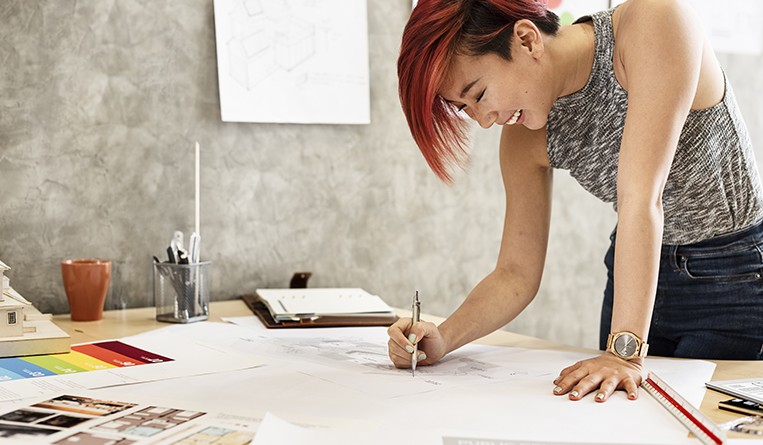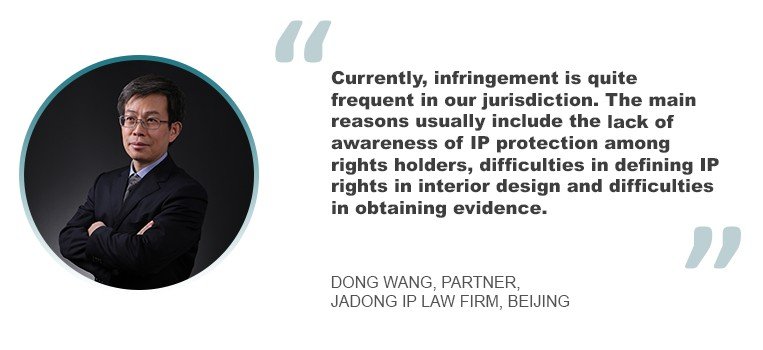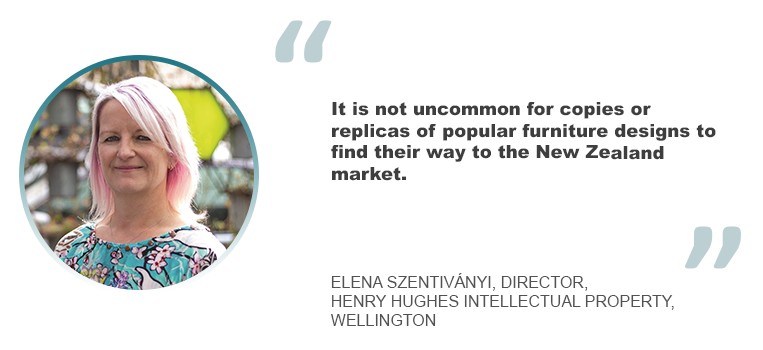An inside look at interior design and IP
29 February 2024

With the internet making it easy to copy creative works without permission, designers, architects and businesses in the interior design industry must stay vigilant. Espie Angelica A. de Leon discusses the importance of awareness, education and proactive action, urging stakeholders to take necessary steps to prevent violations and protect their creative works.
In 2021, MindChamps PreSchool in Singapore accused a school in China’s Shaanxi province of trademark infringement for using MindChamps and its Chinese name, Maijiesi. The Chinese school also copied MindChamps’s logo, school uniform and interior decoration designs. On June 28, 2023, the Chinese court ruled in favour of MindChamps, having found the Chinese school to have engaged in unfair competition and trademark infringement of the preschool chain’s brand and corporate identity.

“Currently, infringement is quite frequent in our jurisdiction,” said Dong Wang, a partner and patent team co-head at Jadong IP Law Firm in Beijing. “The main reasons usually include the lack of awareness of IP protection among rights holders, difficulties in defining IP rights in interior design and difficulties in obtaining evidence, among others.”

According to Yvonne Tang, director of intellectual property at Drew & Napier in Singapore, reported cases of IP infringement in the interior design space in the country are few and far between. “It may be that cases are settled before they reach the courts. It may also be that many interior design companies are SMEs which lack the knowledge and/or resources to pursue infringement of IP,” shared Tang.
In Indonesia, many creative professionals, including architects, are well aware their interior design works are being copied without their consent. “However, they tend to let it go, or even sometimes believe that it is a recognition that people love their works,” said Fortuna Alvariza, founding partner at FAIP Advocates & IP Counsels in Jakarta. “This lack of action to defend the IP rights has led people to believe that violating other people’s IP rights is common and has low risk.”
This is unfortunate. Interior design is IP-rich; designers, architects and business enterprises better get down to the business of protecting their designs and brands as soon as possible.
IP assets involved in interior design
Aside from trademarks, copyright is the main type of protectable IP right. In interior design, copyright generally applies to the following: original illustrations, sketches, drawings, photographs, diagrams, architectural plans, 3D rendering, collages, models, mood boards, the entire design of the interior space, written proposals and the like.
Interior design also mainly involves design patents, which protect the design of a reproducible product. Any invented system, method, technical solution and the like that facilitates the work of a designer for interior spaces may be covered under invention patents, utility model patents, confidential information or trade secrets.
Furniture design falls under the protection of industrial design. Protection for registered designs may also apply to cabinetry, light fittings and articles of adornment and ornamentation (where, for example, customization of designs of these items is provided as a service), among others.
According to Wang, physical objects made according to the design may also be protected as works of applied art or architectural works, depending on the circumstances. Additionally, the decorative commercial appearance generated in design can be protected under the Anti-Unfair Competition Law if it holds a certain influence.
Wang explained: “The decorative commercial appearance mainly includes two types. One is the decorative commercial appearance of a product, including its name, shape, packaging, slogan, decoration and so on. The other one is the decorative commercial appearance of business premises. For example, a unique overall business image is formed by the combination of decoration, signs, styles of business utensils and clothing of business personnel in service industries such as catering and retail. As for the meaning of ‘having a certain influence,’ it refers to ‘having a certain market awareness and significant characteristics that can distinguish the sources of goods or services.’ It should be pointed out that these decorative commercial appearance rights protected by the Anti-Unfair Competition Law are usually acquired by the managers of the goods or businesses premises who use them, and have little to do with the designer.”
Common forms of IP infringement
Copyright infringement is likely the most common form of IP infringement occurring in the interior design industry.
In the industry, it isn’t unusual for potential customers to receive draft design proposals before signing the contract. We these materials in hand, the consumer may then decide not to proceed with working with the interior designer. This leads to opportunities wherein the illustrations, drawings, sketches and others are used without the copyright owner’s consent and exploited for someone else’s benefit. “One of the classic cases usually happens when an architect sends her interior design work for pitching to gain a tender and it is not successful, but experiences a bad surprise later when she finds out the work is actually being used without consent,” Alvariza said.

Social media makes the job of copycats easier, even in the interior design industry. As interior designers freely share their works online, there’s always a risk of others copying them, sometimes at the request of a client. This is common in the hotel and hospitality industry, where designs are copied for their own interior spaces. Tang noted that in private homes, copyright infringement might even go unnoticed due to the private nature of the setting.
“When we put our interior design in our social media, we should know that people from all over the world can see the interior design work and be ready for the use of works without consent,” noted Alvariza.

The furniture industry is not immune to the same challenges, with reports of manufacturers duplicating designs from renowned designers like Axel Vervoordt. DIY websites also contribute to the problem by selling knockoffs of home accessories and furniture.
“It is not uncommon for copies or replicas of popular furniture designs to find their way to the New Zealand market,” said Elena Szentiványi, director at Henry Hughes Intellectual Property in Wellington.
To-do list for IP protection
Aside from registering their IPs for protection, what other measures can designers, architects, interior design companies and other business establishments take to protect their IP in terms of interior decoration and design? Our interviewees suggest the following:
- IP rights should be explicitly set out and flagged in contracts. “In the case of a designer being employed by a company, reasonable agreements and arrangements should also be made to distinguish personal IP and professional IP,” said Wang.
- Set out terms and conditions. Alvariza shared: “One of the steps that can be taken by architects or interior designers is to prepare brief terms and conditions before presenting the works in front of the potential clients in a meeting, accompanied with the list of attendees to be signed by the potential clients that will be useful as evidence of their attendance to see the interior design works. The terms and conditions may consist of the direct or indirect acknowledgement of the ownership of IP rights of the interior design works owned by the architect or interior designers.”
- Use copyright notices. According to Szentiványi, it is not possible to register copyright in New Zealand. Instead, it is advisable to use the internationally recognized copyright notice for finished artistic works.
- Describe your work as original or authentic.
- For designers and companies that accept client commissions, transmit, deliver design results or display design results on the internet:
- Take confidentiality measures for information that is not for public disclosure
- Confirm ownership of design results through third-party authentication methods. These include blockchain and timestamp.
- Insert watermarks and the copyright symbol.
- Keep design documents intact as evidence.
- Monitor your works online to track down infringement activities. Use social media and tools such as Google Alerts. “Many third-party online sale platforms have robust IP infringement policies which can be used to have the infringing products removed from the platform. There are a number of third-party agencies that can handle the monitoring for infringing use online,” said Szentiványi.
- File border protection notices.
- Send cease and desist letters to infringers.
- Learn about IP rights, and educate your customers. “Many stakeholders are not aware of the existence of IP rights or the extent of the same in the interior design industry. It is critical that interior designers themselves have knowledge of the types of IP rights surrounding their business and then take steps to protect them,” said Tang.
According to Szentiványi, suing for copyright infringement can be costly, so it’s not always worth it. However, if the infringing products are valuable, it might be worth considering legal action to send a clear message to potential infringers. “The bringing of infringement proceedings can send a clear signal to other potential infringers that they may not get away with it!” she said.
IP infringement is happening in every industry, including the field of interior decoration and design. With the internet making it easy to copy creative works without permission, IP owners mustn’t ignore such violations.
“We encourage interior designers and architects and other creative people to actively take the necessary steps to protect their works,” said Alvariza. “By omitting the necessary action to protect their IP rights, they actually indirectly let others violate their IP rights and believe that it is commonly accepted.”






